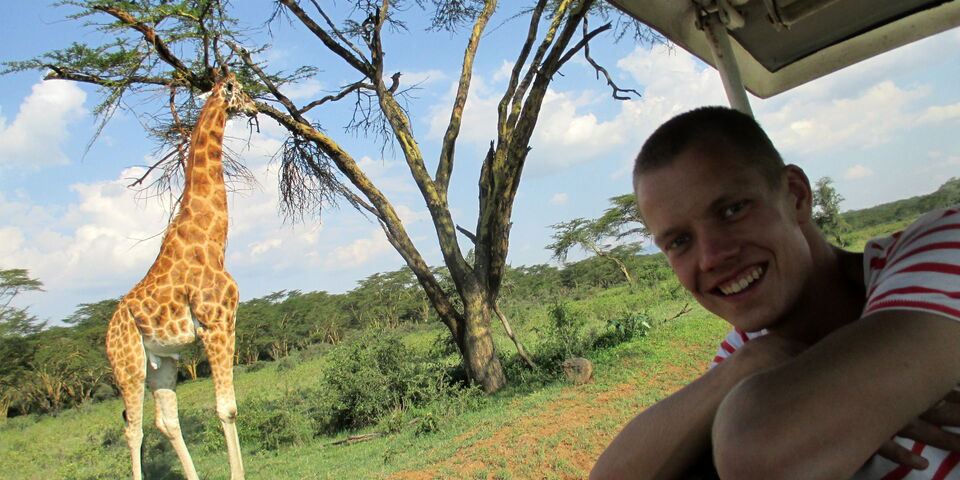And how are things in Loitokitok?
During a short break from my hard work I had the chance to go on a small safari, where I saw giraffes, elephants, lions, and many more wild animals. It’s a wonderful experience for tourists, which you see a lot in national parks, but for locals the wildlife can be a nightmare. The dry season - a nine-month period - is a time elephants come out of the parks at night in search of water. Newly installed water pumps, often funded by foreign donors, are demolished frequently by the elephants looking for water. Upon daybreak, villagers are left without a source for clean water and destroyed crops.
I have been in a village in southern Kenya for over a month now, where I’m researching water conflicts for my master thesis. Together with a local organization I try to map the problems that occur and try to find possible pathways for innovations. Apart from having to share water with local wildlife, the people have conflicts sharing it among themselves, too. Finding a durable solution is quite a challenge in a situation where everybody is dependent on a resource that’s scarce, but I still think it is possible.
At the moment even I am experiencing problems with water. Our taps have run dry since the water company has stopped supplying water because of the drought. We’ve been waiting for a water tanker to arrive for a week. In the meanwhile I have to buy water from vendors who go around with carts pulled by donkeys. Unfortunately, the water is expensive, and most people cannot afford such ‘luxury’ so they have to walk a couple of kilometers everyday to get to the closest water pump. Should that pump be destroyed as well, I don’t think the elephants will be considered friendly anymore.


Discussion